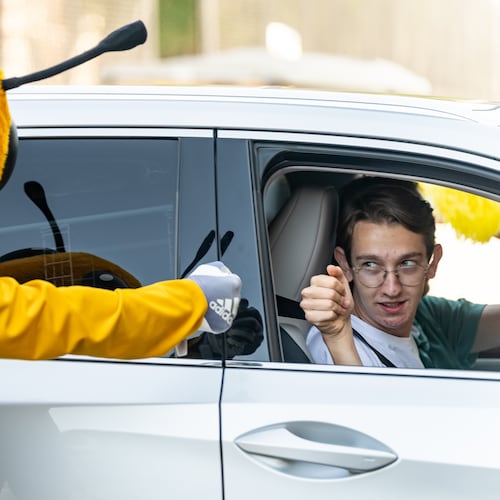University of Georgia professor Peter Smagorinsky shares updates on this blog now and then from his multi-year study following a few Georgia teachers. In his latest check-in with one teacher, he found something new – persistent fear after the slaughter of 17 students and staff at Marjory Stoneman Douglas High School in Parkland, Fl.
Increasingly, students say they expect to experience a school shooting at their own school, a terrible thought to carry to class every day. In this piece, a teacher shares how the fear provoked after Parkland has not gone away for her.
By Peter Smagorinsky
I was talking today with a Georgia teacher as part of a multi-year study I’m doing, following a small set of teachers beginning in their sophomore year at the University of Georgia when I taught them, and into their careers. We talk after each semester, with my primary questions being, what has influenced your teaching this semester? Why these influences, for this point in your career and in this school and community? That sort of thing.
When we talked, this teacher described the semester as “heavy,” emotionally heavy, that is. The Parkland school shooting on Feb. 14, although geographically far from her Georgia community, hit her hard. Like many people, she experienced Parkland far more powerfully than she had any of the many school shootings that preceded it. She thought it affected her so much because the images from the scene available in the media, with their detailed and graphic immediacy, made the shooting almost visceral to her.
For the first time in her teaching career, she felt afraid to go to school.
I know of several people studying the role of trauma in teachers’ lives and in their classrooms. How does it affect a teacher when a loved one dies? When a student in their school commits a sex crime? When a student dies during a class? And now, after a school shooting, even one in a school far removed from her own?
Teachers’ lives shape how they teach, from their religious beliefs to their life experiences to their response to major current events. When asked what had influenced her teaching during the spring semester, she spoke only of Parkland and the gloom and fear she had experienced in its aftermath.
We talked about her experiences at the school the day after the massacre, when she and her students talked about the events. She was often fighting back tears as she and the kids tried to process yet another mass murder in a school setting. These kids walk through some dangerous neighborhoods to get here, she said; school is supposed to be where they go to feel safe from the violence out in the world. But now it is just another potential crime scene waiting to happen.
After Parkland, the faculty and administration in her school held many informal conversations about what to do to keep their school from being next. Some felt teachers should have guns, others did not. Metal detectors at the doors, armed marshals in the hallway, clear backpacks, a no hoodie rule to allow for better identification, fewer access points into the school: The discussion reflected the national quest for a safe solution, one with little agreement and much passion.
Do I have any answers? No more than you or anyone else. Every solution offered thus far has had a theoretical rationale, and as Santa Fe, Texas, has recently shown, even active shooter drills can’t prepare people for a sudden, deadly attack from a well-planned killing spree by an angry young man.
The school administration’s response brought little comfort to the teacher I spoke with, and she is someone who has always talked admiringly of their leadership. In the end, little changed. The school rules remained intact. The curriculum did not change; classes had a business-as-usual approach, centered on classic literature, math formulas, science lessons, studies of past historical eras, and everything that had been in place before the tragedy in Florida. She did have a media unit already in place that enabled her and her students to examine news coverage, which she was able to divert to coverage of Parkland, if very carefully, given the volatility of the politics of gun access and control debates.
After Parkland, the school went back to the business of schooling. The students did participate in the national walkout, although the teacher found it very unsatisfying. Some kids took it seriously and observed the event with silence. Some used the occasion to get out of class and talk with their friends. Some found it too cold outside and stayed in. Teachers were told they had to file for a leave if they left their classrooms to join them, an understandable liability precaution that nonetheless felt like a form of censure. After 19 minutes, it ended and that was that.
The school does have an extracurricular club, No Place for Hate, which was formed to address school climate issues and promote a more inclusive sense of community. Perhaps, it will reduce kids’ feelings of alienation and need to strike back. But, perhaps it won’t, and it’s hard to argue causally from a complex web of influences. Ultimately, the club has no more authority than the chess club in actually undertaking action in the school, serves a niche that may encounter resistance elsewhere, and, as an extracurricular, is for volunteers only.
Nothing of substance changed in how the school was structured or how it operated. What changed was how everyone felt about being there.
And the teacher remains fearful for herself and her students, and wonders what would happen to her husband and baby at home if she should go to work one day and never come back.
About the Author
Keep Reading
The Latest
Featured



